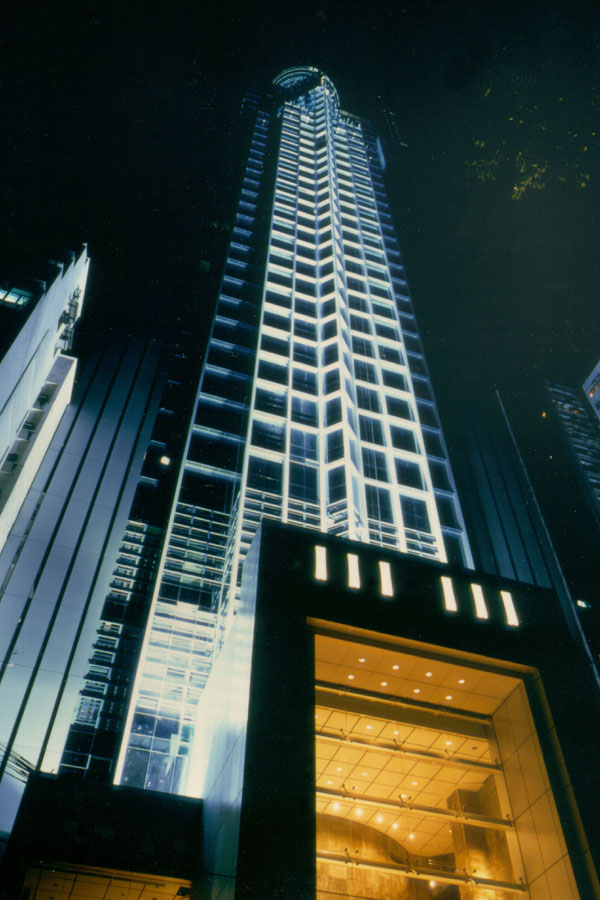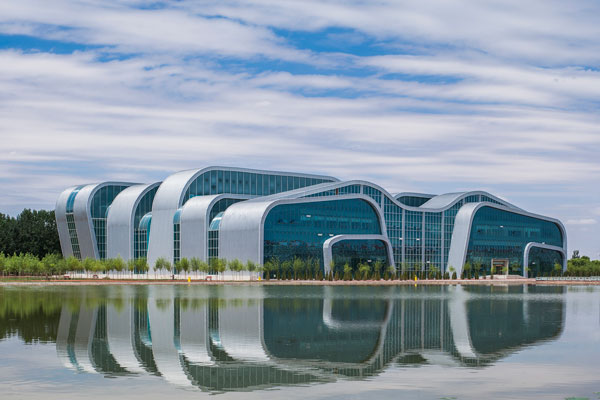With a strong presence and landmark projects in Hong Kong and Mainland China, hpa now looks to strengthen its business in Southeast Asia. Nicholas Ho, Director of hpa’s new Kuala Lumpur office, explains the strategic thinking behind the move.

January 28th, 2015
Top image: Zhongwei Aquatic Centre, China
Where are hpa’s biggest markets currently?
hpa is a 35-year-old practice. We were one of the earliest foreign architects to enter China more than 30 years ago, and till today, a majority of our business remains in the Mainland, with projects completed in more than 30 cities across the country. Hong Kong is our secondary market and we also have ongoing projects overseas, such as South Korea, Malaysia and Macau.

Central Liaison Office, Hong Kong
Which markets does hpa see as having biggest potential for growth in the region and why?
The Chinese markets, although gradually cooling down and moving towards a more moderate development pace, will still remain as the largest markets in the world, because there is still a large latent demand nationwide; statistically speaking there are still 300 million citizens moving into new townships and cities within the decade, and China will relook its domestic market to ensure sustainable growth instead of explosive progression.
That said, it is never healthy for a practice to depend heavily on a single market. History has certainly taught us that. We had offices in Singapore, Thailand, India, Dubai and six offices in China over the past decades. However, if the company is centrally controlled, operations becomes a hazard to manage, therefore with the economic downturn in Southeast Asia around 2000, we ended our operations in the region, placed more focus in the China market and never really looked back until recently, which in retrospect turned out to be a mistake all things considered.
With that said, can you explain the strategy behind the company’s recent decision to set up an office in Kuala Lumpur?
We believe Southeast Asia as a regional platform will be the secondary playground for any eager architectural practice, where China will still remain the primary source. When we look at the future of the architect in Hong Kong, domestically speaking, the room for growth and even mere survival is getting more and more challenging. With fees getting more competitive, number and size of projects decreasing, liability and industry’s salary increasing and margins thinning, it comes as no surprise that the overall atmosphere is unfavourable. As such, we must explore other alternatives and be both open-minded and flexible in terms of our professional and business capacity.
Southeast Asia has a lot of latent potential, from current land and housing prices, to investment capital interest, population and buying power, and government initiatives to attract foreigner’s attention. We aim to recreate our Southeast Asia platform within the next five years, with a solid goal to cater for all investors and developers both locally and internationally. Malaysia for us is the first step. Given our existing outreach and collaborators it makes sense for Kuala Lumpur to be the first chess piece on the board.
What are some of your upcoming projects in Kuala Lumpur?
We have a few large-scale residential projects coming up in the Sungai Long area, a mixed typology between villas and condominium towers. We are also looking into a few prime sites for potential mixed-use developments.
What other projects is hpa working on around the region?
Apart from Kuala Lumpur, we are exploring the Iskandar area of Johor, Malaysia and also have projects in Incheon, Seoul, Korea.
There are a lot of Chinese investment and development interests globally, and we believe the eagerness of Mainland companies to diversify into foreign markets will proliferate. We are also looking at Jakarta, Indonesia and Yangon, Myanmar.

Zhongwei Aquatic Centre, China
With “design for the people” being the company’s philosophy, how does hpa ensure that its projects around the region sensitively consider all local variables?
‘Design for the people’ has always been our focus; we believe the architect is the embodiment of an artist, precision engineer, sociologist and businessman. To truly deliver architecture that will stand the test of time, one must understand the building from the scale of the user, community and city. Therefore, part of our belief in working abroad is to enrich our own learning curve, to study new cultures and ways of living, and to study how people interact, live, work and play on a global scale. This will allow us to offer an international perspective to each project, providing unique approaches to different situations. We have in-house full time research teams as well as ground crew to conduct local culture and site study reports prior to our design commencement, contributing to a deeper understanding on more than just the technical aspects of erecting a building, but creating an impact to the local quality of living.
hpa
hpahk.com
A searchable and comprehensive guide for specifying leading products and their suppliers
Keep up to date with the latest and greatest from our industry BFF's!

Channelling the enchanting ambience of the Caffè Greco in Rome, Budapest’s historic Gerbeaud, and Grossi Florentino in Melbourne, Ross Didier’s new collection evokes the designer’s affinity for café experience, while delivering refined seating for contemporary hospitality interiors.

Savage Design’s approach to understanding the relationship between design concepts and user experience, particularly with metalwork, transcends traditional boundaries, blending timeless craftsmanship with digital innovation to create enduring elegance in objects, furnishings, and door furniture.

Sub-Zero and Wolf’s prestigious Kitchen Design Contest (KDC) has celebrated the very best in kitchen innovation and aesthetics for three decades now. Recognising premier kitchen design professionals from around the globe, the KDC facilitates innovation, style and functionality that pushes boundaries.
The internet never sleeps! Here's the stuff you might have missed

Archie Moore’s kith and kin unveiled in the Australia Pavilion at the 60th International Art Exhibition of La Biennale di Venezia.

An outstanding line-up of participants will contribute to a beautifully curated exhibition in Thailand that delves deep into the collective thinking of architecture in our region and helps set a progressive agenda for the future of design.